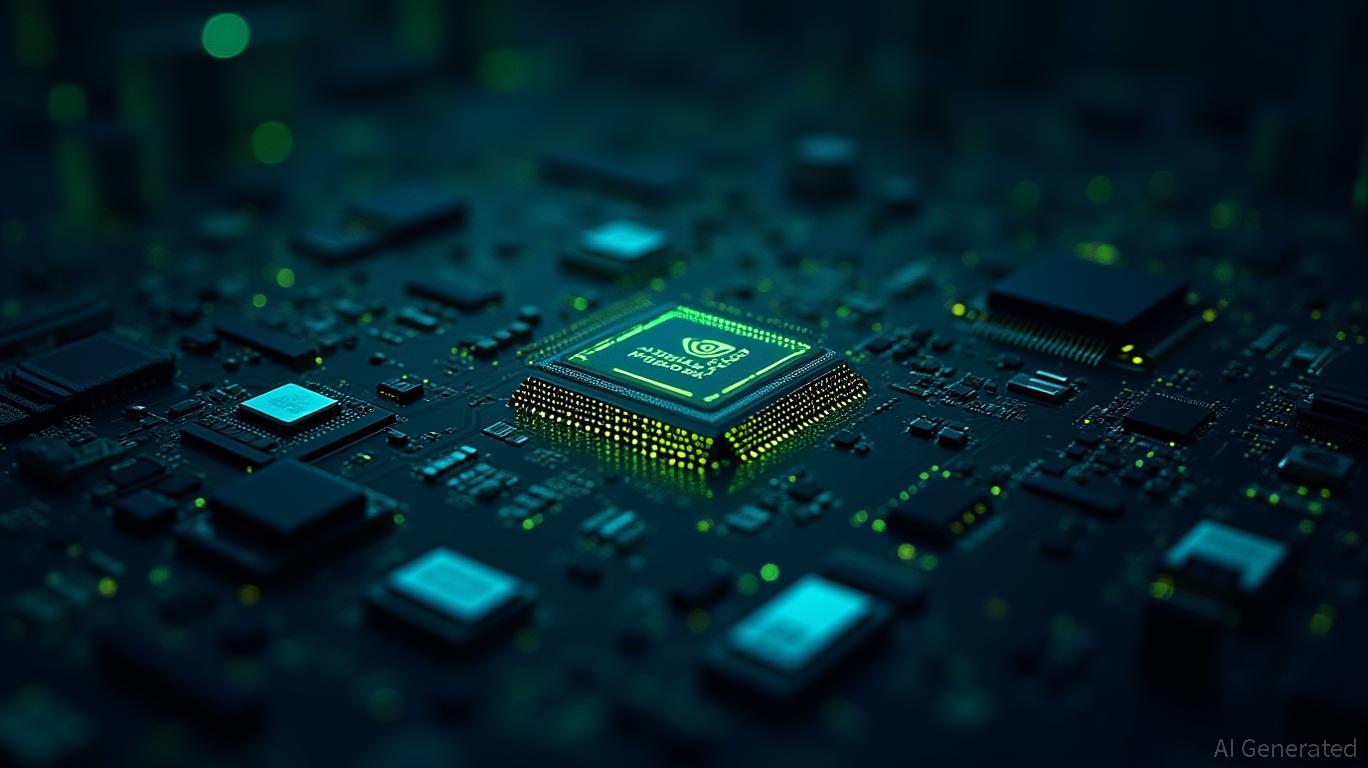Nvidia is the dominant player in AI infrastructure, but its size may limit its upside. AMD and Broadcom have huge opportunities, with smaller sizes and the potential to outperform Nvidia over the next 5 years. AMD has strong revenue growth and is carving out a niche in AI inference, while Broadcom is a leader in data center CPUs and is part of the UALink Consortium challenging Nvidia's NVLink.
NVIDIA's recent milestone of reaching $4 trillion in market value underscores its dominant position in AI infrastructure. However, the company's size may limit its upside potential, creating opportunities for competitors like AMD and Broadcom.
NVIDIA's Market Leadership
NVIDIA's market dominance is evident in its 92% share of the data center GPU market [1]. The company's growth has been driven by the insatiable demand for AI infrastructure and its new Blackwell graphics processing units (GPUs) architecture. NVIDIA's revenue grew by 114% year-over-year in fiscal 2025, with its data center segment alone reaching $115.2 billion, up 142% [1].
Challenges for NVIDIA
While NVIDIA's market dominance is impressive, its size may limit its upside potential. The company's large market share and high valuations may make it difficult for NVIDIA to achieve significant growth in the coming years. Additionally, NVIDIA's focus on AI computing may limit its ability to diversify into other areas of the tech industry.
Opportunities for AMD and Broadcom
AMD and Broadcom present significant opportunities to challenge NVIDIA's dominance in AI infrastructure.
AMD: Strong Revenue Growth and AI Inference Niche
AMD has shown strong revenue growth, with its data center segment growing by 15% year-over-year in fiscal 2025 [1]. The company is carving out a niche in AI inference, which involves processing AI models to make predictions. This area of AI is expected to grow rapidly in the coming years, presenting an opportunity for AMD to challenge NVIDIA's dominance.
Broadcom: Data Center CPUs and UALink Consortium
Broadcom is a leader in data center CPUs and is part of the UALink Consortium, which is challenging NVIDIA's NVLink technology. NVLink is a high-speed interconnect technology used in NVIDIA's GPUs. The UALink Consortium aims to develop a more open and interoperable interconnect technology, which could challenge NVIDIA's dominance in AI computing.
Conclusion
While NVIDIA's dominance in AI infrastructure is undeniable, its size may limit its upside potential. Competitors like AMD and Broadcom present significant opportunities to challenge NVIDIA's dominance in the coming years. AMD's strong revenue growth and niche in AI inference, as well as Broadcom's leadership in data center CPUs and participation in the UALink Consortium, make them potential contenders in the AI infrastructure market.
References
[1] https://www.forbes.com/sites/stevenwolfepereira/2025/07/09/nvidia-just-hit-4-trillion-but-the-real-ai-boom-hasnt-started-yet/
[2] https://www.ainvest.com/news/nvidia-ai-imperium-10-000-investment-1-million-2035-2507/

Comments
No comments yet